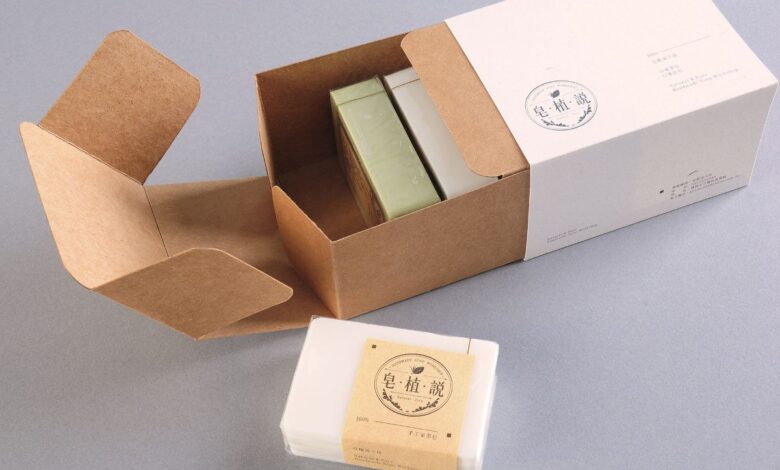Understanding the Cost Factors of Custom Soap Packaging
Custom Soap Packaging at Wholesale Prices

Custom soap packaging plays a significant role in both the product’s presentation and the brand identity it creates. When soap manufacturers or artisans decide to invest in custom packaging, they must consider various cost factors that can influence the final price. Understanding these factors is essential for making informed decisions about packaging choices that align with budget and branding objectives. This article will explore the key elements that affect the cost of custom soap packaging, providing a clear understanding of how each component contributes to the overall expense.
Material Selection: The Foundation of Packaging Costs
The type of material chosen for soap packaging is one of the most critical cost factors. Different materials, such as cardboard, kraft paper, plastic, and glassine, come with varying price tags. Each material has its advantages and drawbacks, influencing both the cost and aesthetic appeal of the packaging.
Cardboard and kraft paper are commonly used in the soap packaging industry due to their eco-friendly nature and cost-effectiveness. However, the thickness, texture, and quality of the material can drive up the price. Premium materials like rigid boxes or eco-friendly biodegradable options may be more expensive due to their specialized manufacturing processes and sourcing requirements.
Plastic packaging, though widely used, is generally less environmentally friendly and may incur higher costs due to its production process. While plastic offers durability and moisture resistance, it often costs more than paper-based options. Glassine, a smooth and transparent paper, is commonly used for wrapping soap bars to enhance their aesthetic appeal. However, glassine may be more expensive than other paper options, as it is often produced in smaller quantities.
In summary, the material selected for custom soap packaging will directly affect the overall cost. Soap manufacturers must carefully assess their budget and brand image to choose a material that aligns with both their goals and cost considerations.
Design Complexity: Impact on Production Costs
Design complexity is another significant cost factor when creating custom soap packaging. The more intricate and unique the design, the higher the cost to produce it. Simple designs with minimal elements will typically incur lower costs, while packaging with detailed graphics, embossing, debossing, or special finishes will drive up expenses.
For instance, custom packaging that requires multiple colors, elaborate typography, or custom illustrations will require more time and expertise to design. This complexity translates into additional costs during the pre-production phase, as the design must be created and refined before it can be printed.
The production process itself can also increase in cost depending on the complexity of the design. Special techniques like foiling, embossing, or spot UV coating can add significant costs to the overall production. These techniques require additional steps and specialized equipment, which means more labor and higher overheads.
When designing custom soap packaging, it’s crucial to strike a balance between creativity and practicality. While unique designs can enhance brand appeal, they can also significantly increase production costs. Companies should consider whether the design will add enough value to justify the extra expense, especially for small or artisanal soap producers.
Printing and Color Choices: A Key Cost Factor
Printing is an essential aspect of custom soap packaging and can heavily influence the overall cost. The type of printing method used, the number of colors, and the complexity of the artwork all impact the price. Standard printing methods, such as offset or flexographic printing, are commonly used for mass production, but there are a variety of specialized techniques available for creating high-end designs.
The number of colors used in the packaging design is one of the most influential factors in printing costs. The more colors involved, the more expensive the printing process becomes. Four-color process printing, for example, uses four base colors (cyan, magenta, yellow, and black) to produce a wide range of hues, but the costs rise with each additional color added.
Special finishes such as metallic inks, spot UV, or textured printing will further increase the printing cost. These effects can elevate the overall appearance of the packaging, but they come with an additional price. Custom soaps often feature vibrant, eye-catching designs, which can require precise printing techniques and multiple color layers, driving up production costs.
In short, the printing method and the number of colors used can significantly affect the cost of custom soap packaging. Brands should evaluate their design’s printing requirements to ensure they align with both budget constraints and desired visual outcomes.
Packaging Size and Dimensions: A Direct Impact on Costs
The size and dimensions of custom soap packaging directly influence its cost. Larger packaging requires more material, which in turn increases the overall price. For instance, packaging for larger soap bars or gift sets may require more space and more material to create, resulting in higher production and shipping costs.
Packaging that is too small can also present challenges. It may require custom molds, additional cutting, or special design elements to ensure the soap fits snugly and securely. Custom sizing can be more expensive because it requires special tooling and production runs tailored to a specific size.
The shape of the packaging also plays a role in cost determination. Standard box shapes like rectangles and squares are easier and cheaper to produce than unique shapes like hexagons or custom-cut designs. Any deviation from a standard design often requires custom molds or additional labor to produce, raising the overall cost.
Therefore, the size and shape of the soap packaging should be carefully considered in relation to the soap itself. Custom soap packaging must be large enough to protect the product but not so oversized that it wastes material or increases unnecessary costs.
Quantity Ordered: Bulk Orders vs. Small Batches
One of the most influential factors in the cost of custom soap packaging is the quantity ordered. Ordering in bulk typically reduces the unit cost, while small orders may lead to higher per-unit costs. Manufacturers and artisans should consider whether they are producing large volumes of soap or small batches, as this will directly impact the pricing of custom packaging.
When ordering in bulk, the cost of setup, design, and production is spread across a larger number of units, resulting in lower costs per package. This is why large-scale soap manufacturers often order packaging in bulk, as they can take advantage of economies of scale.
On the other hand, small-batch soap producers or artisans who create limited edition or handcrafted soaps may not be able to justify large bulk orders. For these businesses, the per-unit cost of custom soap packaging can be significantly higher. However, small batches may offer unique advantages, such as the ability to produce exclusive designs and test new packaging styles.
Ultimately, businesses must weigh the benefits of bulk ordering against the need for small-batch production. Finding the right balance between cost-effectiveness and product uniqueness is key.
Eco-Friendly Options: The Price of Sustainability
In recent years, sustainability has become an essential consideration for many consumers. Eco-friendly packaging options, such as biodegradable materials, recycled paper, or plant-based inks, are gaining popularity in the soap packaging industry. However, while these environmentally conscious choices are desirable, they often come at a higher cost.
Eco-friendly materials can be more expensive than traditional ones due to their sourcing, production, and certification processes. For example, recycled paper may cost more than standard cardboard because it requires additional processing and quality control. Biodegradable plastics or compostable films may also be more costly than traditional petroleum-based plastics.
Moreover, some eco-friendly packaging options may not have the same durability or aesthetic appeal as their non-sustainable counterparts, requiring additional considerations for soap manufacturers. While eco-friendly options can enhance a brand’s image, they can raise costs due to their limited availability and specialized production methods.
If sustainability is a priority for a soap brand, it’s important to factor in these additional costs and evaluate whether the benefits align with their market positioning and customer base.
Production Time and Lead Times: Delays and Rush Orders
The production time and lead times involved in custom soap packaging can also influence costs. Generally, the more time-consuming and complex the production process, the higher the cost. Custom packaging that requires intricate designs, specialty printing, or unique materials may take longer to produce, leading to extended lead times.
For businesses that need packaging quickly, rush orders can significantly increase the price. This expedited service often requires manufacturers to allocate additional resources, such as overtime labor or faster production methods, to meet deadlines. As a result, rush orders can come with a premium price tag, sometimes as much as 30-50% higher than standard production costs.
To avoid these additional costs, businesses should plan their packaging needs well in advance and allow enough time for production. This will help keep costs down while ensuring the packaging arrives when needed.
Shipping and Logistics: Final Considerations
Finally, shipping and logistics can add to the overall cost of custom soap packaging. Once the packaging is produced, it needs to be transported to the manufacturer or directly to retail locations. The weight and size of the packaging can influence shipping costs, particularly if the packaging is bulky or fragile.
If the packaging is heavy, the shipping cost can be substantially higher, particularly for international shipping. Additionally, custom packaging that requires special handling or storage due to its fragility or unique shape can incur additional fees.
It’s also essential to consider storage costs for large orders of custom soap packaging. If packaging is produced in bulk and needs to be stored before use, storage fees may add up, particularly if the space required is substantial.
In conclusion, shipping and logistics should not be overlooked when calculating the cost of custom soap packaging. Brands should account for transportation costs and storage fees when evaluating the total expense of packaging production.
Conclusion
In conclusion, understanding the various cost factors involved in custom soap packaging is crucial for making informed decisions. From material selection and design complexity to shipping logistics, each element plays a role in determining the final price. By carefully evaluating these factors, soap manufacturers can optimize their packaging choices to align with both their budget and brand vision, ultimately leading to a more efficient and cost-effective production process.
Source Link: https://ibexpackaging.com/soap-boxes/



